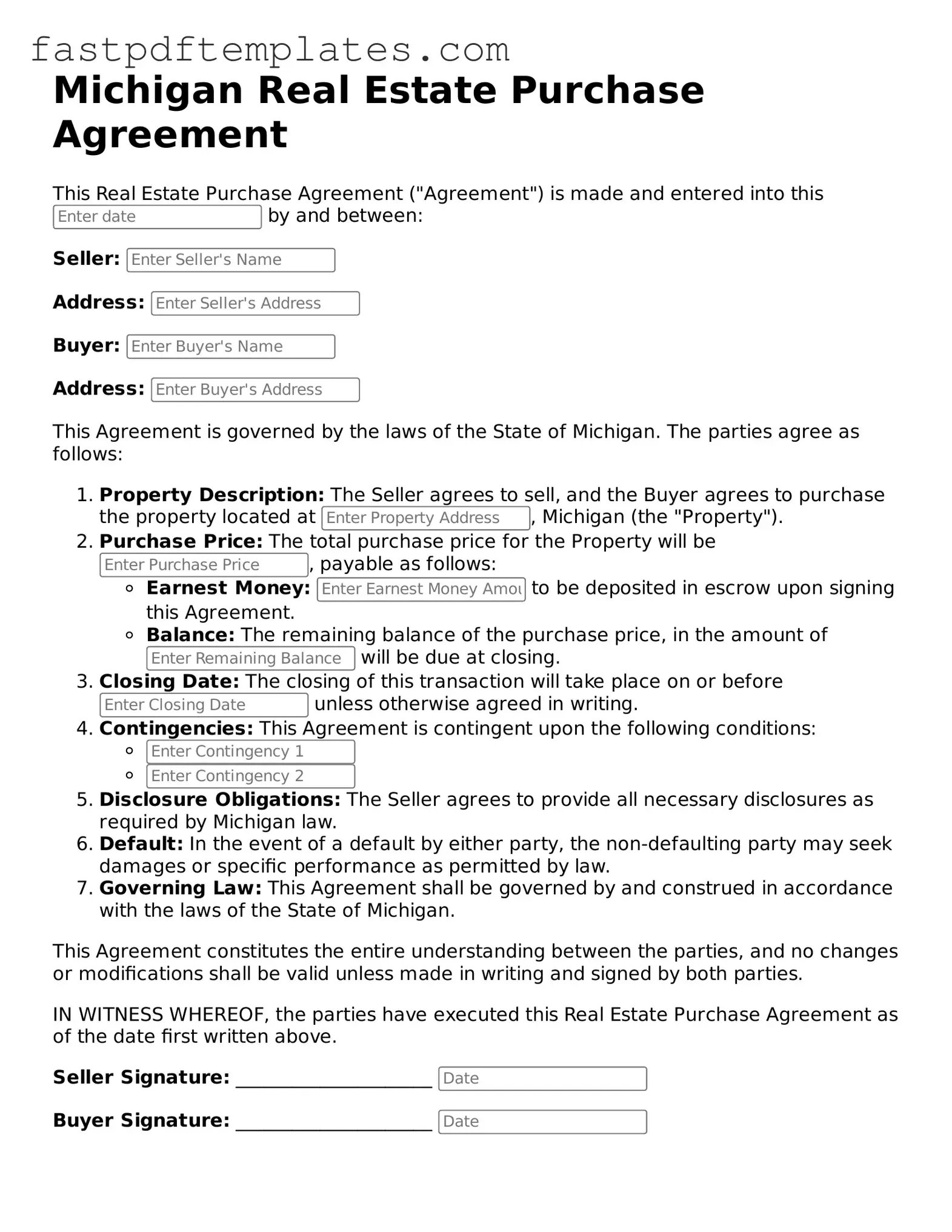The Michigan Lease Agreement is similar to the Real Estate Purchase Agreement in that both documents outline the terms and conditions of property use. While the purchase agreement focuses on the sale of property, the lease agreement governs the rental arrangement. Both documents detail the responsibilities of the parties involved, including payment terms, duration, and maintenance obligations. This ensures that both landlords and tenants understand their rights and duties during the lease period.
The Michigan Counteroffer Form serves as a counterpart to the Real Estate Purchase Agreement by allowing buyers and sellers to negotiate terms. When an initial offer is made, the counteroffer form enables one party to propose changes to the terms, such as price or closing date. This document helps facilitate communication and can lead to a mutually agreeable purchase agreement, reflecting the evolving nature of negotiations in real estate transactions.
The Michigan Seller’s Disclosure Statement is another document that complements the Real Estate Purchase Agreement. It requires sellers to disclose known issues with the property, such as structural problems or environmental hazards. This transparency protects buyers by providing essential information that can influence their decision to proceed with the purchase, thereby fostering trust between the parties involved.
The Michigan Offer to Purchase Real Estate is closely related to the Real Estate Purchase Agreement, as it represents the initial step in the buying process. This document outlines the buyer's intent to purchase a property and includes proposed terms. Once the offer is accepted, it typically leads to the creation of a more detailed purchase agreement, thus establishing the foundation for the transaction.
The Michigan Purchase Agreement Addendum is a document that can modify or add to the terms of the original Real Estate Purchase Agreement. It allows parties to include specific conditions or contingencies, such as financing or inspection requirements. This flexibility ensures that all parties can address unique situations or concerns that may arise during the transaction process.
The Michigan Title Commitment is similar in its role of ensuring a clear transfer of ownership, which is also a critical aspect of the Real Estate Purchase Agreement. This document outlines the terms under which a title insurance company will issue a title policy. It provides buyers with assurance that the property is free of liens or claims, thus protecting their investment and ensuring a smooth transaction.
The Michigan Closing Statement, also known as a HUD-1 Settlement Statement, is another document that aligns with the Real Estate Purchase Agreement. This statement details all financial aspects of the transaction, including the purchase price, closing costs, and adjustments. It serves as a final summary for both parties, ensuring transparency and clarity about the financial commitments involved in the property transfer.
The Michigan Real Estate Agency Disclosure is similar in that it addresses the relationship between the parties involved in the transaction. This document clarifies the roles of real estate agents and their fiduciary duties to their clients. Understanding these relationships is crucial, as it affects the negotiation process and the overall dynamics of the real estate transaction.
The Michigan Lease Option Agreement combines elements of leasing and purchasing, making it another relevant document. This agreement allows a tenant to lease a property with the option to purchase it later. It shares similarities with the Real Estate Purchase Agreement in that it outlines terms and conditions for both leasing and potential future ownership, providing flexibility for the tenant while securing the seller's interest.
The Michigan Property Management Agreement is akin to the Real Estate Purchase Agreement in that it governs the relationship between property owners and managers. This document outlines the responsibilities of the property manager, including maintenance and rent collection, similar to how a purchase agreement details the responsibilities of buyers and sellers. Both agreements aim to establish clear expectations and protect the interests of the parties involved.
